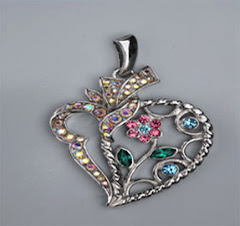About glass history , and how it was developped through time ?
Glass as a natural material was found since time was begun as a result of volcanic eruptions in the form of melted rocks. These rocks were used by Stone Age’s man as cutting tools. However, it is believed that the first man-made glass objects around the 3500 BC were found in Egypt and Eastern Mesopotamia in the form of pots and vases and from there it might be transported by Phoenician merchants along the coasts of the Mediterranean. Hollow glass production was also evolving around the 16th century BC in Egypt besides some activities in Greece, China and North Tyrol
After 1500 BC, Egyptian craftsmen are known to have begun developing a method of producing glass pots and the earliest examples of Egyptian glassware are three vases bearing the name of the pharaoh Thoutmosis 3 who brought glassmakers to Egypt as war prisoners from Asia. Over the following years glass production thought to be spread from Alexandria to Italy.
The discovery of glassblowing was attributed to Syrian craftsmen from the Sidon-Babylon area but the ancient Roman began later blowing the glass inside moulds greatly increasing the variety of shapes .It was the Romans who began to use glass for architectural purposes, with the discovery of clear glass (through the introduction of manganese oxide). Alexandria remained the most important glassmaking area in the East, producing luxury glass items mainly for export.
Towards the year 1000, a significant change in European glassmaking techniques took place. Given the difficulties in importing raw materials, soda glass was gradually replaced by glass made using the potash obtained from the burning of trees. At this point, glass made north of the Alps began to differ from glass made in the Mediterranean area, with Italy, for example, sticking to soda ash as its dominant raw material.
In the middle Ages, the Italian city of Venice assumed its role as the glassmaking centre of the western world. The Venetian merchant fleet ruled the Mediterranean waves and helped supply Venice’s glass craftsmen with the technical know-how of their counterparts in Syria, and with the artistic influence of Islam. Until the end of the 13th century, most glassmaking in Venice took place in the city itself. However, the frequent fires caused by the furnaces led the city authorities, in 1291, to order the transfer of glassmaking to the island of Murano.
In the 14th century, another important Italian glassmaking industry developed at Altare, near Genoa and during the 16th century, craftsmen from Altare helped extend the new styles and techniques of Italian glass to other parts of Europe, particularly France.
In the second half of the 15th century, the craftsmen of Murano started using quartz sand and potash made from sea plants to produce particularly pure crystal. By the end of the 16th century, 3,000 of the island’s 7,000 inhabitants were involved in some way in the glassmaking industry.
The development of lead crystal has been attributed to some English glassmaker, who patented his new glass in 1674. He had been commissioned to find a substitute for the Venetian crystal produced in Murano and based on pure quartz sand and potash. By using higher proportions of lead oxide instead of potash, he succeeded in producing a brilliant glass with a high refractive index which was very well suited for deep cutting and engraving.
It was not until the latter stages of the Industrial Revolution, however, that mechanical technology for mass production and in-depth scientific research into the relationship between the composition of glass and its physical qualities began to appear in the industry.
A key figure and one of the forefathers of modern glass research was some German scientists, who used scientific methods to study the effects of numerous chemical elements on the optical and thermal properties of glass, also invented a tank furnaces. This rapidly replaced the old pot furnaces and allowed the continuous production of far greater quantities of molten glass.
Towards the end of the 19th century, some American engineer invented an automatic bottle blowing machine which only arrived in Europe after the turn of the century.
Although this brief history comes to a close nearly 40 years ago, technological evolution naturally continues. Not yet ready to be “relegated” to a history of glass are areas such as computerized control systems, coating techniques, solar control technology and “smart matter”, the integration of micro-electronic and mechanical know-how to create glass which is able to “react” to external forces.
Terjemahkan ke dalam bahasa Indonesia dengan Google:
Note: Hasil terjemahan Google agak kaku dan ada beberapa kesalahan, tapi dapat membantu mengambil ponit-point penting





















Tidak ada komentar:
Posting Komentar